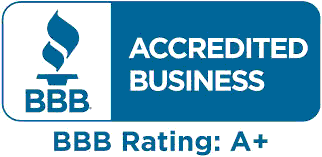Making The Most Of Balance Transfers To Help Reduce Debt
The do’s and don’ts of using balance transfers to pay down your high-interest credit card debt.
Just a few short years ago, balance transfers were seen as a quick-fix for folks drowning in debt. It was simple: you shopped around, found a great introductory deal, made payments while your interest rate was still low, and, once the super-low intro rate expired, you started the whole process over again. By following the low interest rates, a responsible borrower could put a substantial dent in his or her credit card balance.
Today, with new bank regulations and tougher credit guidelines, balance transfers aren’t the quick-fix they used to be. But, for some people, balance transfers can be helpful.
I’ll admit, balance transfers aren’t for everyone. Before you start filling out applications and playing the balance transfer game, there are a few things you should do:
• Read the fine print. Some lenders offer balance transfers with introductory 0% interest rates. But check out the fine print before you decide to apply. Many of these offers are for what lenders call “qualified applicants” – which means people with excellent credit scores. If your credit is less than perfect, you may end up with a higher APR. And keep in mind that, once the introductory period is over, that interest rate will climb back up. Also, remember that many introductory APRs apply to balance transfers only – any new purchases you make with the card are not part of the deal.
• Be careful about canceling your credit cards. Once you transfer your balance, it’s tempting to close out that high-interest card, but it may actually be smarter to leave it open. Your credit score is partially based on a ratio of debt to available credit. Closing a card – even a high-interest card that you don’t intend to use – shrinks your line of available credit. You’re better off keeping the account open and cutting up the card to avoid temptation. And speaking of temptation . . .
• Be realistic. One of the biggest problems with balance transfers is that they can make it easier to let old spending habits resurface. Think about it: If you’re struggling with credit card debt, it’s probably because you were in the habit of living beyond your means. So, let’s say you use a balance transfer to knock $3,000 off of your high-interest credit card. Make sure you don’t turn that into an excuse for a $3,000 shopping spree. If you don’t think you can resist temptation, you may want to consider cutting up your card – or not using balance transfers at all.
• Don’t slack off on your payments. In many cases, a balance transfer means a lower minimum monthly payment. Say your monthly payment was around $175, and you’ve been paying about $200 a month. After a balance transfer, your new monthly payment might drop to $140. It’s really tempting to use the extra money to purchase something you’ve been wanting for a while or to spend a little extra on groceries or entertainment – but don’t! If you continue to pay $200 a month, you’ll pay off your debt even faster.
• Don’t be late! According to the new regulations, credit card issuers are prohibited from raising your rates before the promotional period is over (so, if you signed on for 0% interest for seven billing cycles, that’s what you’ll get). But if you fall behind on your payments by 60 days or more, all bets are off. Your interest rate will shoot up again, and you’ll be back to square one. Be diligent about paying on time, every time.
Again, balance transfers aren’t for everyone. The key to getting out of debt is changing your spending habits: setting a budget, cutting spending, and living within your means. But a balance transfer can be a step in the right direction – if used responsibly.

 We offer FREE Debt Counseling. Get answers to lower or eliminate your debts.
We offer FREE Debt Counseling. Get answers to lower or eliminate your debts.
